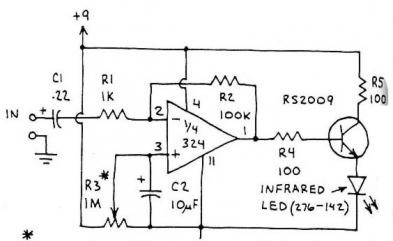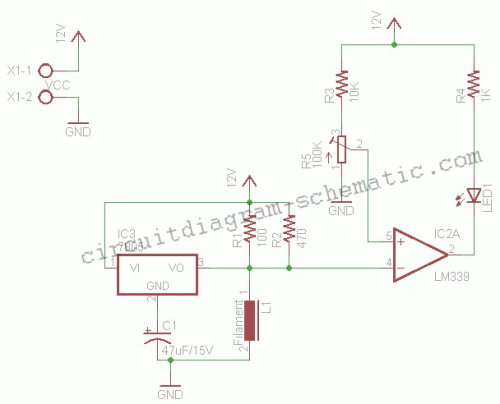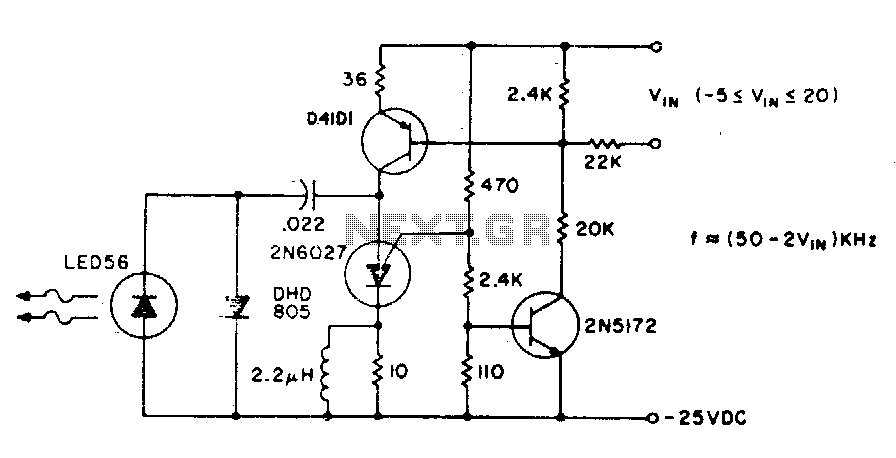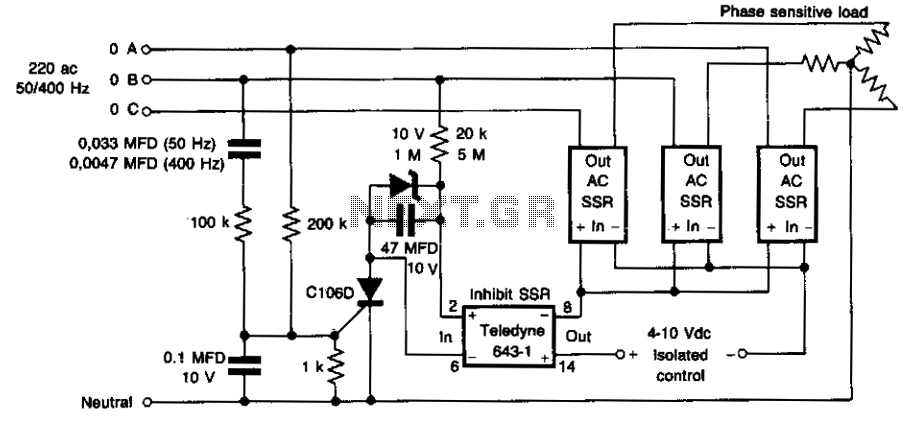
Transmitter Detector for FM Bug Surveillance

The circuit was constructed using a few components powered by a 9 V battery to sense the presence of bugs transmitting within the frequency modulation.
The circuit design utilizes a 9 V battery as the primary power source, making it suitable for portable applications. The core function of this circuit is to detect the presence of bugs, which typically operate within specific frequency ranges. The use of frequency modulation (FM) allows for the transmission of audio signals over varying frequencies, which can be intercepted by the circuit.
Key components likely include an antenna for signal reception, a radio frequency (RF) amplifier to boost the received signals, and a demodulator to convert the modulated signal back into its original form. The antenna captures the frequency-modulated signals emitted by the bugs, while the RF amplifier enhances the weak signals for better processing.
The demodulator, which may be implemented using a simple integrated circuit or discrete components, extracts the audio information from the frequency-modulated carrier wave. This information can then be analyzed or monitored through an output stage, which could consist of an audio amplifier connected to a speaker or a recording device.
Additional filtering components may be included to eliminate unwanted noise and improve the clarity of the detected signals. Capacitors and resistors can be used to create low-pass or band-pass filters, allowing only the desired frequency range to pass through while attenuating other frequencies.
Overall, this circuit serves as a practical solution for detecting and monitoring the activities of bugs operating within specific frequency ranges, providing valuable insights into their transmission behavior.The circuit was constructed using a few components that is powered by a 9 V battery for sensing the presence of bugs transmitting within the frequency mod. 🔗 External reference
The circuit design utilizes a 9 V battery as the primary power source, making it suitable for portable applications. The core function of this circuit is to detect the presence of bugs, which typically operate within specific frequency ranges. The use of frequency modulation (FM) allows for the transmission of audio signals over varying frequencies, which can be intercepted by the circuit.
Key components likely include an antenna for signal reception, a radio frequency (RF) amplifier to boost the received signals, and a demodulator to convert the modulated signal back into its original form. The antenna captures the frequency-modulated signals emitted by the bugs, while the RF amplifier enhances the weak signals for better processing.
The demodulator, which may be implemented using a simple integrated circuit or discrete components, extracts the audio information from the frequency-modulated carrier wave. This information can then be analyzed or monitored through an output stage, which could consist of an audio amplifier connected to a speaker or a recording device.
Additional filtering components may be included to eliminate unwanted noise and improve the clarity of the detected signals. Capacitors and resistors can be used to create low-pass or band-pass filters, allowing only the desired frequency range to pass through while attenuating other frequencies.
Overall, this circuit serves as a practical solution for detecting and monitoring the activities of bugs operating within specific frequency ranges, providing valuable insights into their transmission behavior.The circuit was constructed using a few components that is powered by a 9 V battery for sensing the presence of bugs transmitting within the frequency mod. 🔗 External reference
Warning: include(partials/cookie-banner.php): Failed to open stream: Permission denied in /var/www/html/nextgr/view-circuit.php on line 713
Warning: include(): Failed opening 'partials/cookie-banner.php' for inclusion (include_path='.:/usr/share/php') in /var/www/html/nextgr/view-circuit.php on line 713





